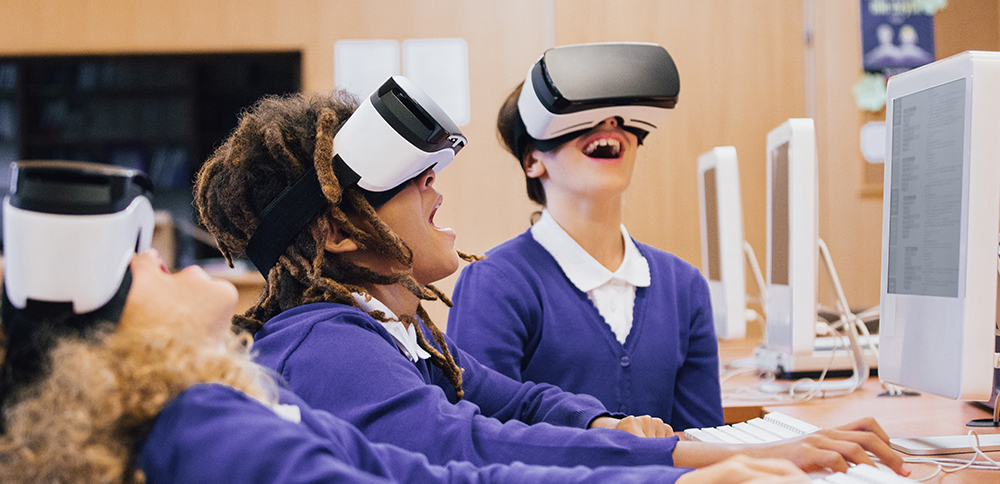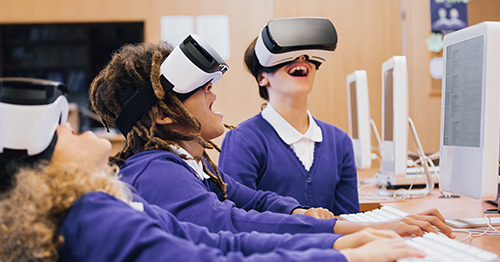
AI and Personalised Learning
In K-12 education, Artificial Intelligence (AI) is spearheading a shift towards more personalised learning environments. AI tools can diagnose student learning styles and difficulties, enabling educators to tailor their teaching strategies. This leads to more effective learning outcomes by providing individualised attention and resources, ensuring that students at different levels of understanding receive the support they need to excel.
Immersive Technology: VR and AR
Virtual Reality (VR) and Augmented Reality (AR) are set to revolutionise classroom experiences in K-12 education by providing immersive learning scenarios that simulate real-world environments. These technologies can be used to explore historical sites, visualise complex scientific processes, or simulate mathematical problems in a visually engaging way, making abstract concepts easier to understand and more interesting for young students.
Blockchain in Education
Blockchain technology is finding its place in K-12 by enhancing the security and reliability of student records. This innovation offers a permanent, unchangeable record of student achievements and can streamline the transfer process between schools by making records easily verifiable and accessible by authorised institutions, all while maintaining privacy and security.
Sustainability and Green Tech
Sustainable technologies are increasingly crucial in K-12 education, not just for reducing environmental impact but also for educating students on sustainability practices. Initiatives include using digital textbooks to save paper, implementing solar panels on school buildings, and integrating sustainable living practices into the curriculum, which helps foster environmentally conscious students from a young age.
Continuous Remote Learning
The future of K-12 education includes a blend of in-person and remote learning. This model supports students who thrive in different learning environments and provides access to education for those who are remote or have specific needs that make traditional schooling challenging. Enhanced digital platforms are being developed to make remote learning as interactive and engaging as classroom experiences. Discover advancements in remote learning Navigating these trends will require educators to continually adapt to new technologies and methods. The aim is to create an inclusive, effective, and flexible learning environment that prepares all students to succeed in an increasingly complex world. These advancements in educational technology are not just about keeping up with trends but also about improving the quality and accessibility of education for every student.














